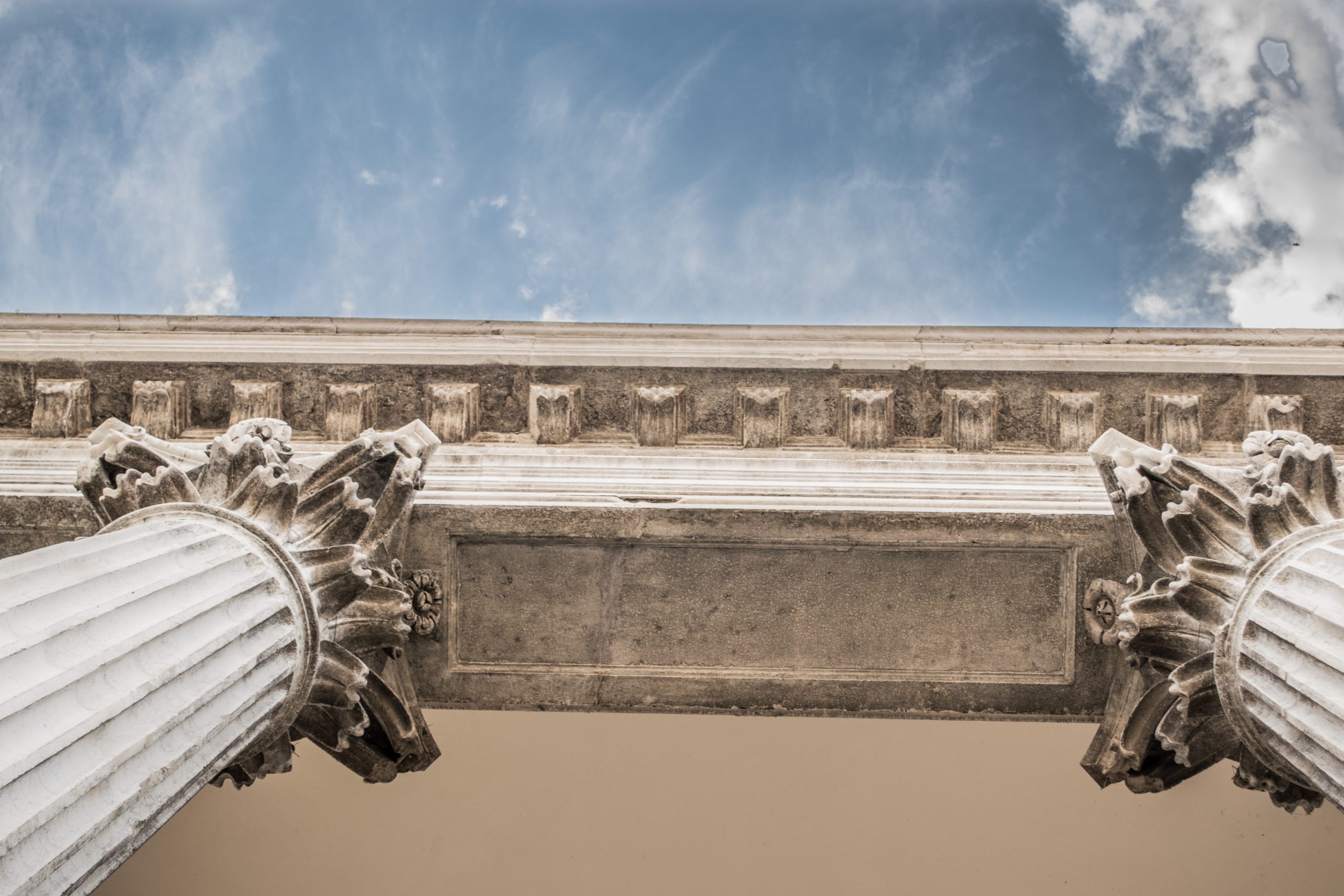Ancient Greek architecture paved the way for the centuries of Western architecture that followed with many styles using Greek inspiration in a reprised fashion. The style predominantly used a trabeated style of construction with stone being the primary material alongside timber frames. Many buildings that survive, entirely or in part, are temples and famous examples include the Parthenon and Olympeion in Athens. These monumental structures had rows of columns which supported a stone lintel upon which a pitched roof structure which spanned the building’s length. Greek architectural columns were segmented in strict, controlled orders which each came with a unique set of characteristics. These classical orders dictated the column size, frieze, capital ornamentation and entablature area.

Doric Order:
The Doric order is the simplest in design terms with plain, rounded capitals, no base and a tapering form. A noticeable characteristic is the distinct frieze pattern that alternates between plain metopes and grooved, fluted triglyphs. A Doric column shaft has 20 flutes, the purpose to accentuate the vertical elements of the column as well as creating a sense of rhythm in the structure. With no base, Doric columns were placed straight atop the bricked stylobate although at a later date in conjunction with Roman influence the columns were built onto the established plinth and torus foundation structure. Due to their simplicity and squat visual appearance, the Doric columns were associated with strength and integrity, qualities often attributed to the all-powerful masculine Olympians.
Ionic Order:
The Ionic order is characterised by its unique scrolled capitals, known technically as opposed volutes, located in the echinus of the column that top the fluted pillars. Compared with a Doric shaft’s 20 flutes, an Ionic shaft has 24 flutes that are equally spaced around a pillar that is slimmer than the Doric column. On the Ionic frieze there is no alternating metope/frieze pattern but instead a continuously decorated frieze that extends the whole building length. On top of the Ionic capital in the entablature is an architrave made of three plain tiers called fasciae that act a visual break between the vertical flutes and the sculpted frieze decorations. Compared to the masculine structural figure of the Doric column, Roman historian Vitruvius likened the Ionic columns to a more feminine style.

Corinthian Order:
Out of the three orders used by Ancient Greek architects, the Corinthian order was the most decorative and ornate. The column is the thinnest out of the Greek classical orders and Vitruvius attributed the origins of the Corinthian column to the city of Corinth where sculptor Callimachus is said to have invented it. Similarities between the Ionic and Corinthian columns are that both have 24 flutes in their shaft, both have a plain frieze, and both have a fasciae-styled architrave on their entablature. However, the capitals of a Corinthian column are far more decorative; typically decorated with two rows of acanthus leaves that fold and curl to form volutes. As well as the ornate capitals, Corinthian columns have an embellished cornice that typically feature fluted patterns.
It wasn’t just the column forms that had strict ideals they had to conform to as temple layouts were based off precise rules of proportion too. Temples tended to follow similar layouts and often had a peristyle (outer colonnade) that surrounded the central inner sanctuary. At the heart of all Greek temples was the Cella which was a space only to be used by priests and it was here that the statue of the temple’s namesake deity was housed. Although today we view Greek temples and structures as being an off white/cream coloured form of marble, originally the buildings would’ve been painted with a variety of bright colours in a patterned style. The Ancient Greek style was heavily influential not only within its time but also for being able to transcend centuries – lending itself to many reprisals in history.

